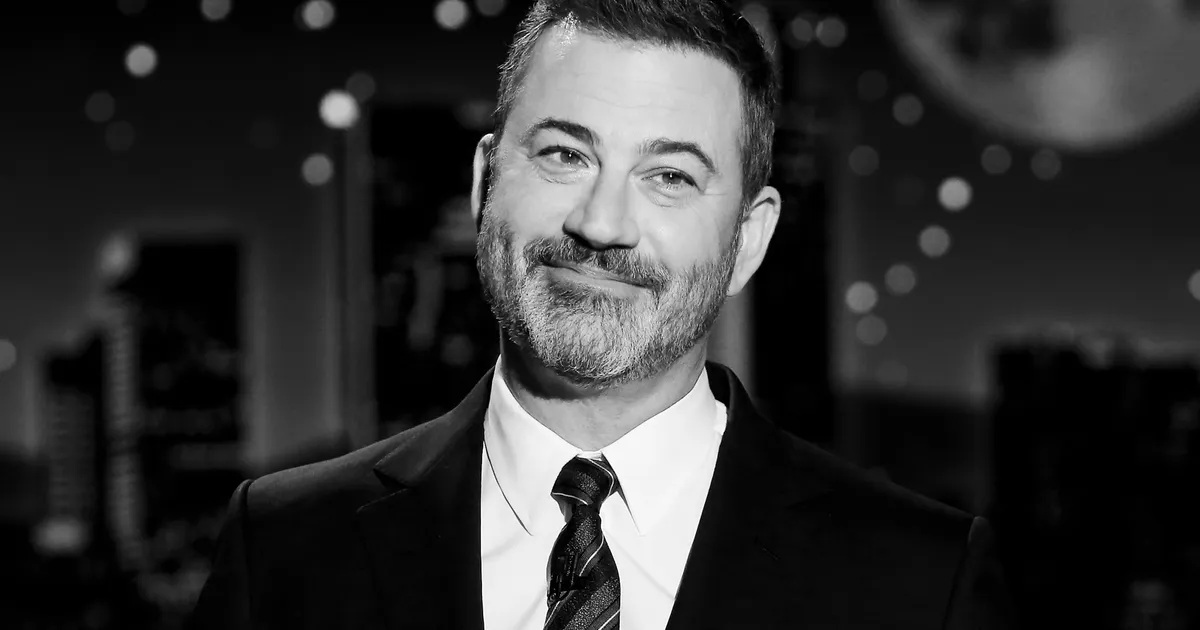
In the end, Disney did the right thing. Monday’s decision to give Jimmy Kimmel his talk show back, less than a week after putting it on ice in the wake of government threats, was a rare bright spot in a year that has seen one major corporation or institution after another surrender to demands from the Trump White House and its acolytes. But while Kimmel is once again telling jokes on ABC, not everyone in America has been able to see his show when it airs on TV because of a boycott from two of the network’s major affiliate groups, Nexstar and Sinclair. While Sinclair will return Kimmel’s show to its stations tonight, Sinclair announced, and there’s a good chance Nexstar will at some point, maybe even relatively soon, the whole dispute has underscored something that’s been evident for years now: The relationship between the broadcast networks and their affiliates is due for a major restructuring.
Much has changed in the TV world this century, but at its core, the way the Big Four (ABC, CBS, NBC, and Fox) get their programming to local American communities has remained pretty static for decades. Rather than directly deliver shows and events to viewers via a national feed, networks beam their programming to hundreds of TV stations throughout the country, which in turn send it out to local communities by transmitting it over public airwaves or by licensing it to cable companies to pipe it into your house. Even if you watch one of the networks digitally via something like YouTube TV, you’re not getting your shows directly from the network: You’re watching a version of your local affiliate station’s feed.
So why do the Big Four continue to use such an elaborate system of weights and pulleys to distribute their shows in an age when most of what people watch on TV now comes via streaming? In a word: money. For decades now, affiliates have been paying networks literally billions of dollars every year for the right to broadcast network fare. It’s called “reverse compensation,” and it became a thing in the 1990s when local stations got the right to charge local cable companies (and satellite services like DirecTV) for the privilege of piping their (free, over-the-air) broadcast signals into your home. Networks then demanded local stations share some of these newfound cable riches with them.
Even with cord-cutting, there are still enough homes that get cable to make this an incredibly lucrative source of income: S&P Global Market Intelligence last year estimated cable companies paid roughly $15 billion to stations with about half of that income ending up with the networks via reverse comp. Bottom line: Each of the Big Four is pocketing several billion dollars in revenue from affiliate fees, money that would not be immediately or easily replaced were, say, Disney to decide one day to simply turn ABC into a tile on Disney+ and make a full national feed of the network available to all subscribers. The network-TV business model — hanging on by a thread — depends on those revenues more than ever, which is why networks go out of their way to avoid picking fights with those big station groups and, as much as possible, keep them happy.
Why the Trump Administration Has Its Eye on Local TV
By itself, the Kimmel kerfuffle probably won’t prompt any significant shift to the status quo. Sinclair and Nexstar, despite some snarky press releases (especially from Sinclair), have continued to keep dialogue open with Disney and ABC, and if you read between the lines, you can see scenarios in which Jimmy Kimmel Live! returns to their stations at some point, perhaps reasonably soon. “I think they’re trying to figure out how to resolve this in a way that works for everyone,” one industry insider familiar with the situation told me this week. But the broadcast landscape is changing so quickly, and so too could the economic calculus that currently keeps both sides playing (relatively) nice.
FCC chairman and wannabe Goodfella Brendan Carr has made no secret of his desire to strengthen the hand of TV-station conglomerates such as Nexstar and Sinclair at the expense of the national broadcast networks. Last December, even before Trump returned to the White House, Carr wrote to Disney CEO Bob Iger to warn him that, in his view, “the network/affiliate relationship is out of balance” and he was not happy about companies like Disney trying to strengthen their streaming services by altering their relationships with affiliates. And since taking over the chairman’s position, Carr has also hinted he’ll try to lift longstanding ownership caps on local TV stations, so that groups like Nexstar and Sinclair can get bigger than ever and thus start flexing their muscles more to bully networks the way they have with Kimmel.
Carr couches this as returning power to “local communities,” but that’s bunk: 20 or 30 years ago, most local stations actually were owned by people who lived in the same cities as their stations; if Carr gets his way, less than a half-dozen very big companies will now own the vast majority of TV stations in America. And they’re being run to serve a national interest, not local concerns: Kimmel’s show was blacked out this week in liberal-leaning cities such as Washington, D.C., Seattle, and Portland, not because viewers there were offended, but because the national, right-leaning companies which own those stations imposed their conservative agenda on those communities. Carr doesn’t want localism; he wants to give a company like Sinclair a bigger bully pulpit to do stuff like this.
Can Networks Have a Future Without Affiliates?
If and when the FCC lifts the ownership cap, resulting in further consolidation of the TV-station marketplace, it could finally prompt the broadcast networks to bite the bullet and accept the financial hit that might come from reimagining the network-affiliate relationship. Perhaps it means demanding less in reverse comp from station groups in exchange for more flexibility in how they distribute their content. It’s silly and outdated that network primetime shows have to wait until the next day to stream on demand; episodes should be able to post live across the country at the same time they premiere on TV. Ditto news and talk shows. Most of the people watching those shows on live TV today would probably continue doing so even if they landed a couple hours earlier on streamers.
On the other hand, it makes sense to keep the status quo for the NFL and other sports events, since those actually do generate huge live audiences and revenue for both the networks and their local affiliates. (Such content also isn’t going to be preempted over silly culture-war battles.)
Similarly, networks need to be able to have more options if and when the next Kimmel situation emerges. The tech exists to let networks use geo-targeting to offer live network programming to specific areas: When NBC, for example, streams SNL live across the country via Peacock, viewers in Seattle or Buffalo see their local NBC station’s feeds. There’s no reason ABC shouldn’t be able to let Hulu subscribers in blacked-out Nexstar and Sinclair markets watch Kimmel’s show live, too, if local stations refuse.
Would it make sense at some point for a network to walk away from the current affiliate system? Well, it depends. There’s one scenario in which companies like Comcast, Paramount, and Disney convert their broadcast networks into cable channels and thus get the money they’re now earning secondhand via affiliates directly through cable companies like Charter. The thing is it probably would be a smaller amount of money, and networks would have to figure out how to program a full day of content without local news and syndicated fare. Not impossible, but not easy — particularly at a time when it’s unclear just how long the Big Four networks are going to be around or how quickly cable will be viable. Cord-cutting isn’t going to just stop.
What If NBC Streamed on Netflix?
Another scenario worth spitballing: Transferring network feeds to streaming. The parent companies of the Big Four all have stand-alone streamers, and they could, in theory, offer their national feeds to subscribers without affiliate middlemen. The problem is, as noted, that would mean giving up a ton of revenue (or raising monthly fees for those streamers to make up for it).
Broadcasters could also try striking carriage deals with streamers outside the network ecosystem — think Netflix, Prime Video, or Apple TV+. Netflix recently announced a deal that will see one of the top broadcasters in France send its live feeds to Netflix, even as the broadcaster remains on TV and cable. There’s been no indication (yet) that Netflix would want to do the same in the U.S., but it no longer seems impossible to imagine something like that happening here. It’s even possible such an agreement would allow current network affiliations to continue but without exclusivity (and with dramatically reduced reverse-comp fees).
A Netflix or Amazon probably wouldn’t be willing to pay as much for network programming as affiliates do — particularly since those feeds would not be exclusive to their platforms — but they could offer networks a cut of advertising revenue generated by their feeds. Given how well shows like NCIS and Grey’s Anatomy do in reruns on streaming, there would probably be a very significant audience for those live feeds, which could then boost ad rates for network shows, helping replace some of the revenue lost from affiliates. Who knows if any of the tech streamers would even be interested in such an arrangement. After all, their long-term goal is more likely to kill off network TV, not shore it up.
But in the last few years, Netflix has been leaning heavily into live programming and other ways to get audiences to open its app every day, not just when a big new show drops. Network live feeds would offer a steady diet of linear content for relatively cheap and all without Netflix having to actually buy a network (something it has repeatedly said it has no interest in doing). And for the networks, it could mean a way forward without having to deal with constant microaggressions from affiliates.
Is any of this going to happen anytime soon? Almost certainly not. Even long term, odds favor the continuation of the current system but with modifications, until such time as network TV just doesn’t make sense at all anymore and goes the way of AOL or Quibi. Nonetheless, the saga of the last week has exposed the serious strains in the network-affiliate relationship and how the current White House is eager to exploit that for its own ends. Companies like Disney should prepare for more fights ahead.



